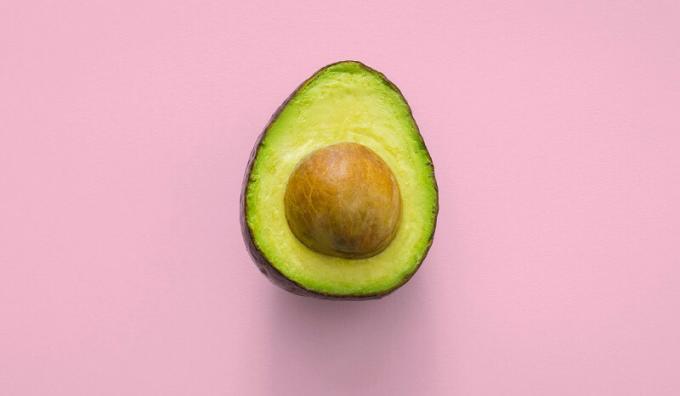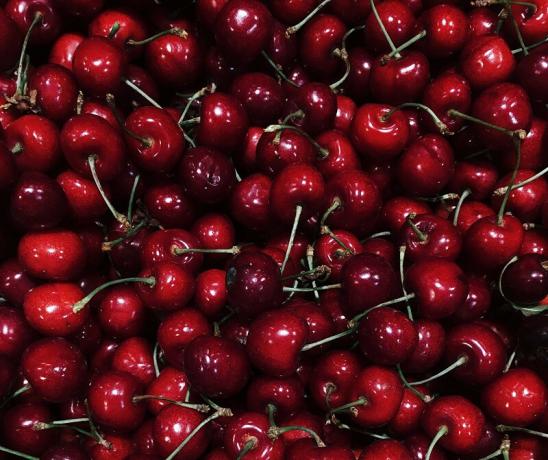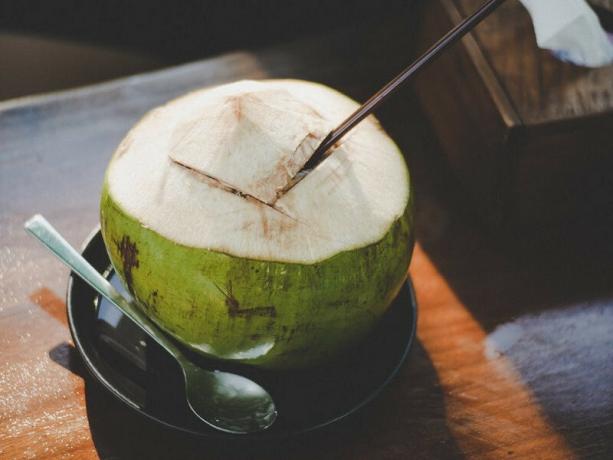The 11 types of fruit (explained with their characteristics)
Fruits, along with vegetables, are an essential part of any healthy diet because they provide high levels of nutrients in the form of vitamins, minerals and fiber that the body uses to maintain its functions organic.
The diversity of fruits that exist on the planet is very high, so much that it is surprising that we do not consume the daily recommended servings of fruit and vegetables despite having all kinds, shapes, colors and flavors.
As a dessert, in the form of juices, purees, in the salad or even as a starter, fruits are very versatile in the kitchen and then let's see how many types of fruit there are according to different classifications.
- Related article: "Macronutrients: what are they, types and functions in the human body"
The main types of fruit (classified)
We have all heard that we should eat about 3 pieces of fruits and vegetables a day. Human beings cannot do without the plant kingdom, since it provides us with all kinds of foods packed with many nutrients in the form of vitamins, minerals, fiber, and even a little proteins.
We must not forget to incorporate these foods into our diet that, despite being very diverse and having all types and conditions, there are many people who do not eat any fruit at all in their day-to-day lives.
Consuming fruits and vegetables regularly helps us prevent diseases, including high cholesterol or diabetes. Fruits are the best sweet and nature offers it to us, being food much more suitable for children than ice cream, candies or any other sweet. And they can not only be eaten as a dessert or a snack, but can also be combined with dishes salty, in the form of salads, accompaniments or taking them in a refreshing juice or in the form of jelly. The possibilities are endless!
If we were to classify fruits according to different characteristics, we would never finish. There are them of all color, shape, hardness, with or without seeds, more tropical and more polar. There are some that are only taken in powder form, such as cocoa, or in its juiciest form, as is the case with strawberries and melon. Here we have chosen to base ourselves on two main criteria: according to its degree of acidity and according to the characteristics of its fruit.
Classification according to its degree of acidity
This is the classification of fruits according to their degree of acidity.
1. Acid fruits
Sour fruits have many beneficial acids, which influence their taste. These acids help reduce the cholesterol, the triglycerides and other substances whose accumulation is quickly harmful. Within this group we can find fruits such as:
- Kiwi
- Lemon
- Orange
- Pineapple
- Apple (depending on its variety)
- Grape
- Grapefruit
- Blueberry
- Tamarind

- You may be interested in: "Sense of taste: its components and operation"
2. Semi-acid fruits
Semi-acidic fruits have a mild, slightly sour taste, and within the field of fruits, they are considered a source of protein. Most of the fruits in this group contain amino acids essential in the amount necessary to satisfy human biological needs and therefore considered of great importance. Among them we find:
- Strawberry
- Plum
- Quince
- Medlar (depending on its variety)
- Raspberry
- Peach
- Tangerine
- Mango
- Tomato

- Related article: "The 20 types of proteins and their functions in the body"
3. Neutral fruits
In general, neutral fruits are fruits rich in vitamins and minerals. Many of them are considered essential for our health because they contribute to the functioning of the immune and muscular systems. In this group we find hard shell fruits and dried fruits.
- Coconut
- Avocado
- Olives
- Almonds
- Hazelnuts
- Peanuts
- Walnuts
- Cocoa
- Chestnuts

- Related article: "Psychology of feeding: definition and applications"
4. Sweet fruits
Really, most of the fruits belong to this category. In this group we find all fruits that do not have acids or have them at minimal levels.
What we do find in these fruits are high levels of vitamins, among which we highlight vitamin A, C and E. The following fruits are part of this group:
- Plantain
- Cherry
- Figs
- Cantaloupe
- Pear
- Watermelon
- Custard apple
- grenade
- Gooseberries
- Dates

- You may be interested in: "Types of vitamins: functions and benefits for your body"
According to the characteristics of the fruit
The other classification of the types of fruit is based on the characteristics of the fruit once it is ripe. In this sense, we can differentiate between drupes, pomaceous and grain fruits. Added to this classification, we find fruits that share certain characteristics that are classified in turn in another category of fruits, being citrus fruits, forest fruits and fruits tropical
1. Drupes
Drupes are fruits that have a hard stone inside, covered by an edible fleshy layer. The term comes from the Greek expression "drupe olive", which translates as "ripe olive".
Among the most common stone fruits we find:
- Peach
- Apricot
- Plum
- Cherries
- Coconut
- Mango
- Olives
- Lychee

2. Pomaceas
The pomáceas are the fruits that have seeds protected by a fleshy extension. They differ from drupes in the fact that pomáceas do not have a hard bone that contains their seeds or that it is a seed itself.
Among the pomáceas we find fruits such as:
- Apples
- Pears
- Loquats
- Quince
- Hip

- Related article: "The 4 differences between the animal cell and the plant cell"
3. Grain
The third type of fruit within this classification is that of grain fruits. These fruits have a striking characteristic that their true fruits have the appearance of seeds and are contained in a fleshy interior. Among these we find:
- Strawberries
- Figs
- grenade

4. Citrus
Citrus fruits have their own group and are characterized by being fruits that have an intense acid flavor because they are very rich in citric acid. They also contain high levels of vitamin C, a very beneficial nutrient for our body because it strengthens our defenses. Among them we find:
- Lemon
- Orange
- Grapefruit
- Tangerine
- lime

5. Tropical fruits
Tropical fruits are native to regions located in the tropics. Fruits that do not have to grow in tropical regions are also found in this category, but they do meet certain characteristics, such as requiring high humidity and a warm temperature to be able to develop.
Due to the type of ecosystem in which the plants that give these fruits grow, with very frequent rains and a suitable temperature for many kinds of trees, these tend to be relatively large and juicy.
Among the tropical fruits we find:
- Pineapple
- Kiwi
- Coconut
- Plantain
- Custard apple
- Mango
- grenade
- Guava
- Kaki
- Avocado
- Papaya
- Lychee

6. Berries
We call fruits of the forest those obtained from wild plants and not from crops. They are small fruits, especially from cold or temperate regions. They are mostly berries and among them we find:
- Blueberries
- Blackberries
- Raspberries
- Cherries
- Gooseberries

- You may be interested in: "How do sugar and fat work in our brain?"
7. Nuts
A dried fruit is any fruit that, in its natural composition (that is, without human manipulation), has a percentage of water less than 50%.
They are usually very energetic foods, with a higher concentration of calories compared to other fruits. They are also characterized by being rich in fats, proteins and trace elements, ideal to eat them in the form of an aperitif or in vegetable butters.
Among the nuts we find:
- Pistachio
- Hazelnuts
- Chestnuts
- Macadamia nut

